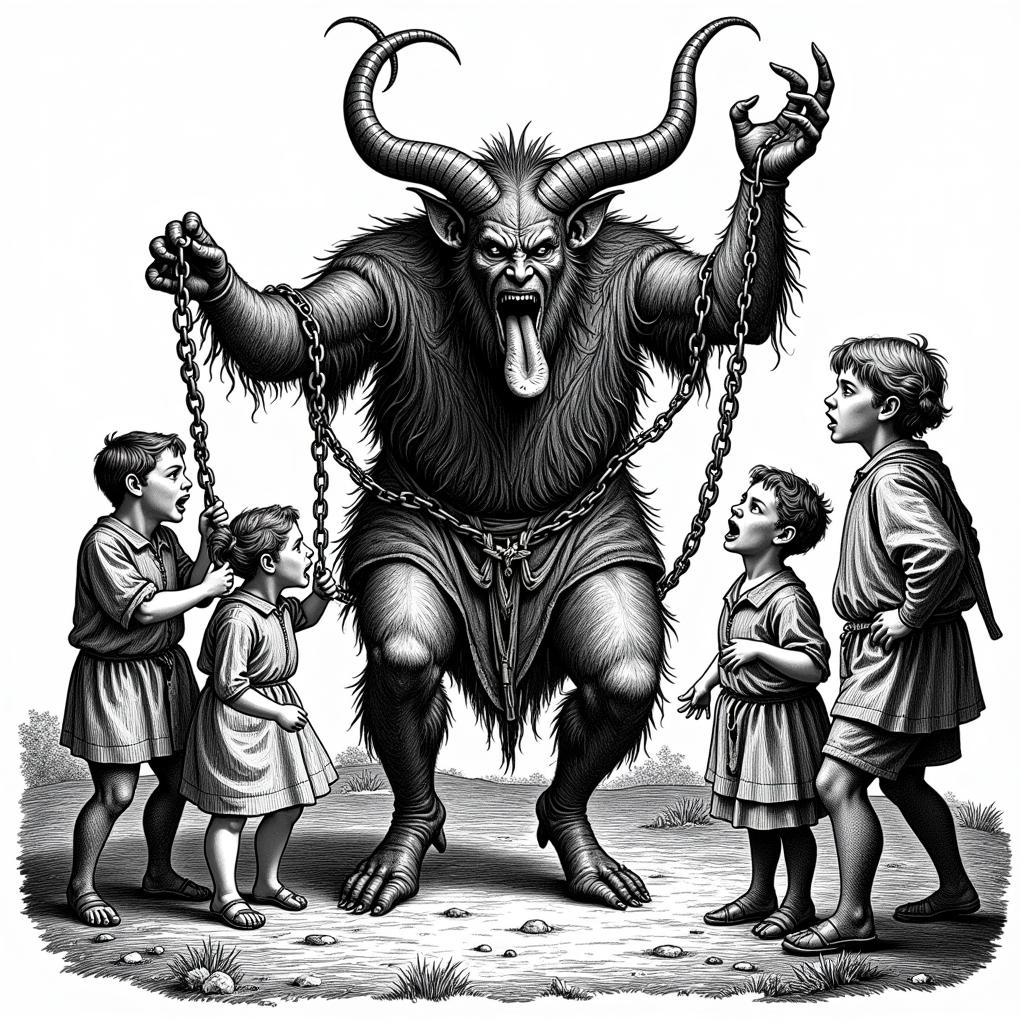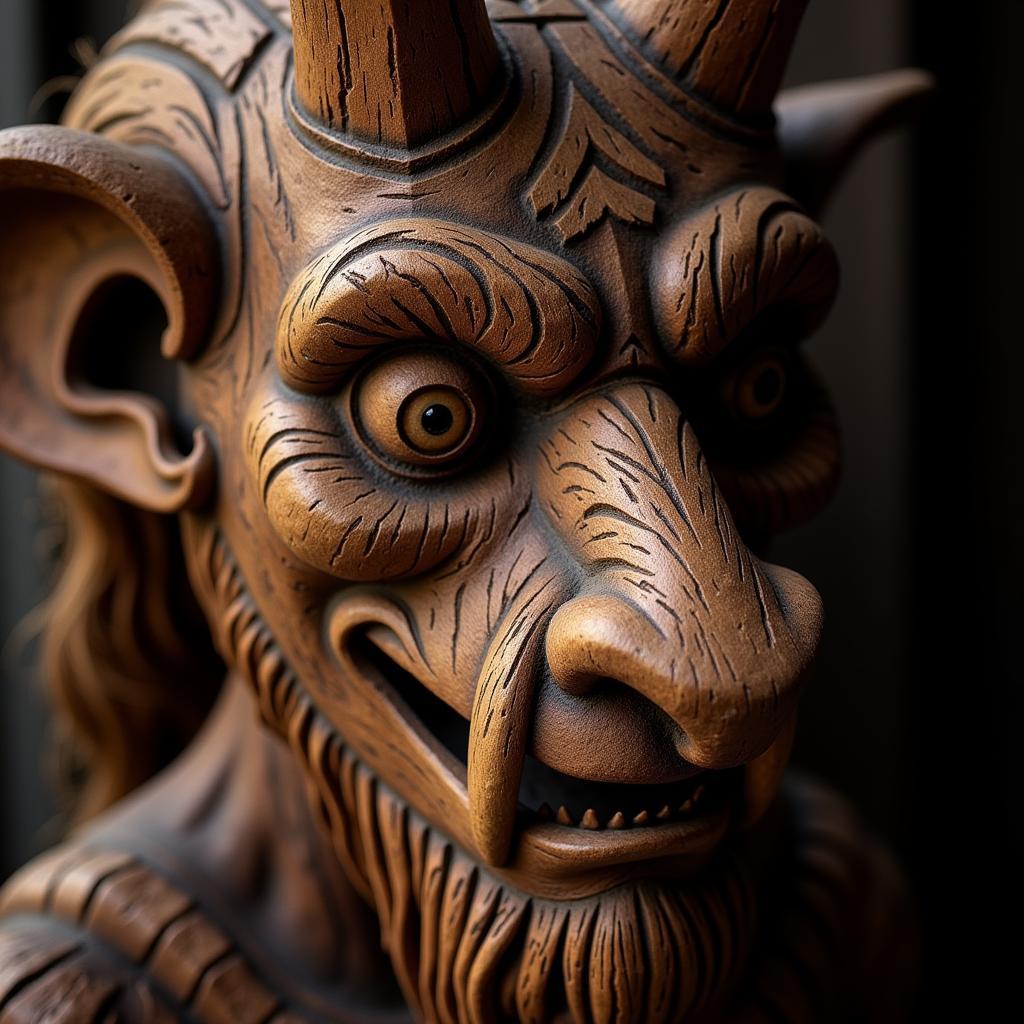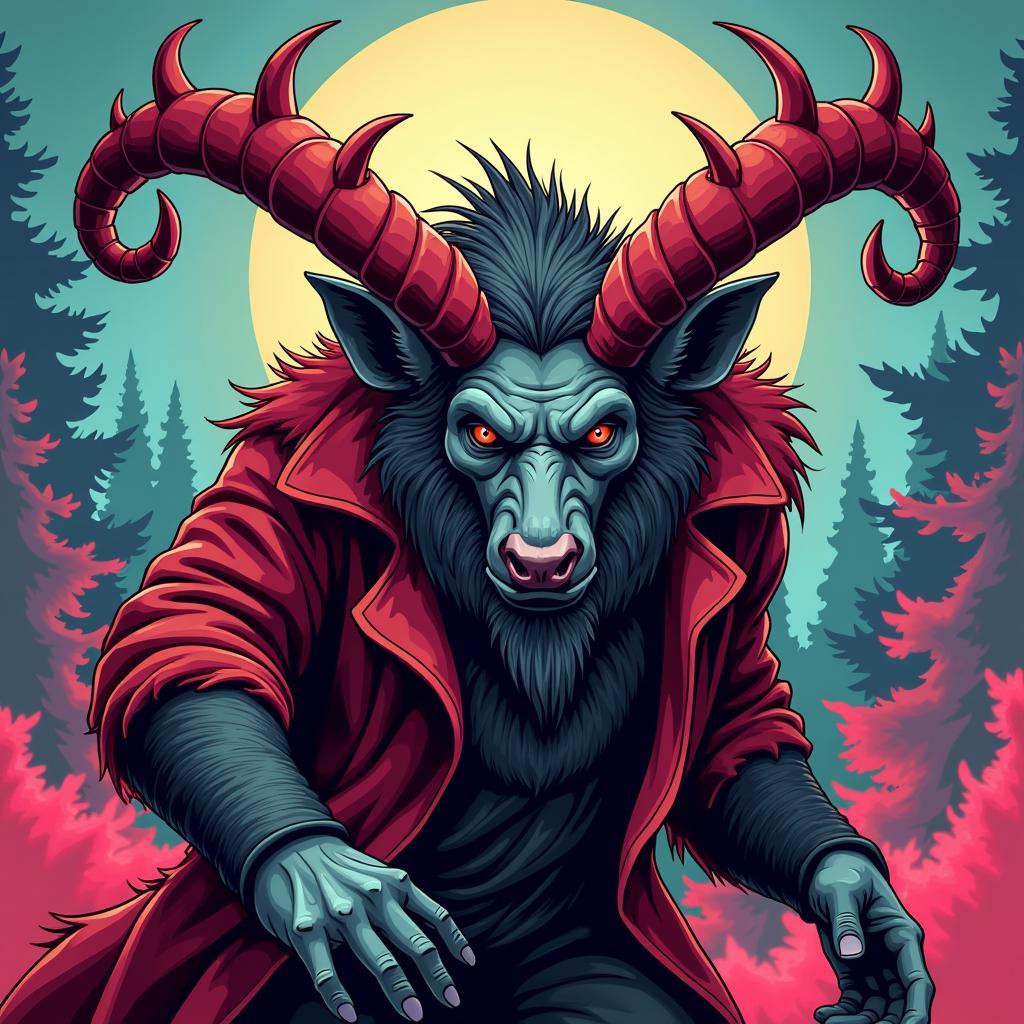Exploring the Dark History and Art of Krampus
Krampus Old Art offers a fascinating glimpse into a darker side of holiday traditions. Rather than jolly Saint Nick, we delve into the shadowy world of Krampus, a horned, anthropomorphic figure from Alpine folklore who punishes misbehaving children during the Christmas season. This ancient tradition, passed down through generations, provides a rich source of inspiration for artists, both traditional and modern.
The Origins of Krampus and its Early Depictions in Art
Krampus, whose name is derived from the German word krampen (meaning “claw”), has roots in pre-Christian Alpine traditions. While his exact origins remain shrouded in mystery, some scholars believe he is linked to pagan deities associated with winter and wilderness. Early depictions of Krampus in krampus old art are often found in woodcuts and carvings, showcasing a fearsome beast with horns, fangs, and a long, pointed tongue. These early artistic representations emphasized Krampus’s role as a punisher, a stark contrast to the benevolent gift-giver we know as Santa Claus.
The Christianization of the Alpine region saw Krampus incorporated into Christmas celebrations, creating a unique juxtaposition of good and evil. While St. Nicholas rewarded good children, Krampus punished the naughty, often depicted carrying birch branches or chains to swat and capture his victims.
 Krampus in Early Woodcut Art
Krampus in Early Woodcut Art
Krampus Art Through the Ages: From Traditional to Modern
Throughout the centuries, Krampus has remained a potent symbol in Alpine culture, inspiring various artistic expressions. Traditional Krampus masks, known as Larven, are meticulously crafted from wood, fur, and horns, each representing the unique vision of the artist. These masks, often used in Krampuslauf (Krampus Runs), are highly detailed and embody a terrifying beauty.
Beyond masks, Krampus has found his way into other art forms, including paintings, illustrations, and sculptures. The 19th and 20th centuries saw a resurgence of interest in Krampus, with artists exploring his darker side through various mediums.
 Traditional Krampus Mask Carving
Traditional Krampus Mask Carving
Krampus in the Digital Age: Exploring New Artistic Frontiers
The digital age has opened up exciting new avenues for Krampus art. Digital artists are now using software like Photoshop and Blender to create stunningly realistic and imaginative interpretations of the horned beast. From dark and gritty illustrations to whimsical and humorous depictions, krampus old art is being reimagined for a modern audience.
The rise of online platforms has also made it easier for artists to share their work and connect with a global community of Krampus enthusiasts. This has led to a surge in creativity and innovation, pushing the boundaries of traditional Krampus imagery.
What is the significance of Krampus in folklore?
Krampus serves as a reminder of the consequences of misbehavior, adding a darker, more complex layer to the holiday season.
How has Krampus art evolved over time?
From simple woodcuts to intricate digital illustrations, Krampus art has continuously evolved, reflecting changing artistic styles and cultural interpretations.
 Modern Krampus Digital Art Illustration
Modern Krampus Digital Art Illustration
The Continuing Legacy of Krampus Old Art
Krampus old art, whether found in centuries-old woodcuts or contemporary digital illustrations, continues to fascinate and inspire. It offers a unique perspective on holiday traditions, reminding us that light and darkness often coexist. By exploring the history and evolution of Krampus imagery, we gain a deeper understanding of the rich tapestry of folklore and its enduring power to captivate our imaginations. Krampus old art reminds us that even the darkest traditions can inspire artistic expression and offer valuable insights into the human condition.
FAQ
-
What is Krampuslauf? Krampuslauf is a traditional Alpine event where people dress up as Krampus and parade through the streets.
-
Where does the Krampus tradition come from? The tradition originates in Alpine countries, primarily Austria, Germany, and parts of Italy.
-
Is Krampus real? Krampus is a figure of folklore, not a real being.
-
What is the purpose of Krampus? Krampus serves to warn children about the consequences of bad behavior.
-
What is the significance of Krampus art? Krampus art reflects the cultural significance of the tradition and offers a unique lens into folklore and artistic expression.
-
How can I learn more about Krampus art? You can explore online resources, visit museums, or attend Krampus events to learn more.
-
Where can I see examples of Krampus masks? Many museums and cultural centers in Alpine regions showcase traditional Krampus masks.
For further assistance, please contact us at Phone: 02462573573, Email: danteum@gmail.com, or visit us at Savico Megamall, 7-9 Đ. Nguyễn Văn Linh, Gia Thụy, Long Biên, Hà Nội 10000, Việt Nam. Our customer service team is available 24/7.
